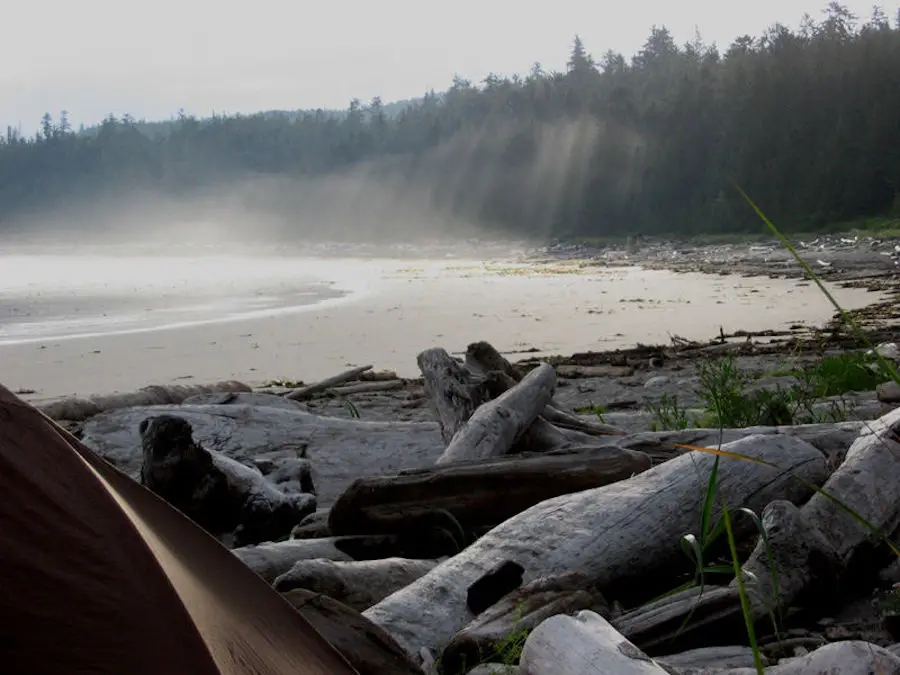Salish Sea Marine Trail
- 39
- 130 NM
- ~14 days
- Class 2

The Salish Sea Marine Trail joins the capital of British Columbia, Victoria to it’s biggest city, Vancouver by a paddling route that contrasts city and residential shoreline to remote wilderness locations on the Salish Sea as part of the Trans Canada Trail. It’s a marine trail like no other.
The full trail is an expedition for veteran paddlers that could take upwards of two weeks. But we’ve also broken down the trip into bite-sized portions so you can experience shorter, simpler journeys to fit your timeframe, skill level and interests.
The Salish Sea Marine Trail consists of four legs: Victoria to Sidney, Sidney to Nanaimo (one part of the Gulf Islands Marine Trail), crossing the Georgia Strait from Nanaimo to Sechelt, and the Sunshine Coast from Sechelt to Jericho Beach.
Victoria
James Bay boat ramp is the official start of the trail but you can choose from many locations around Victoria that suit you best.
Vancouver
The other end of the trail is located at Jericho Beach close to UBC. There are many alternate locations along Vancouver’s shoreline so take your pick.
Launch sites
Due to the length of the Salish Sea Marine Trail, you may want to break it up into multiple legs. Read about the suggested routes on the Four Legs tab and choose your launch site from the many options on the member map or public map.
The full trail is an expedition for veteran paddlers that could take upwards of two weeks. But we’ve also broken down the trip into bite-sized portions so you can experience different aspect in shorter, simpler journeys to fit your timeframe, skill level and interests.
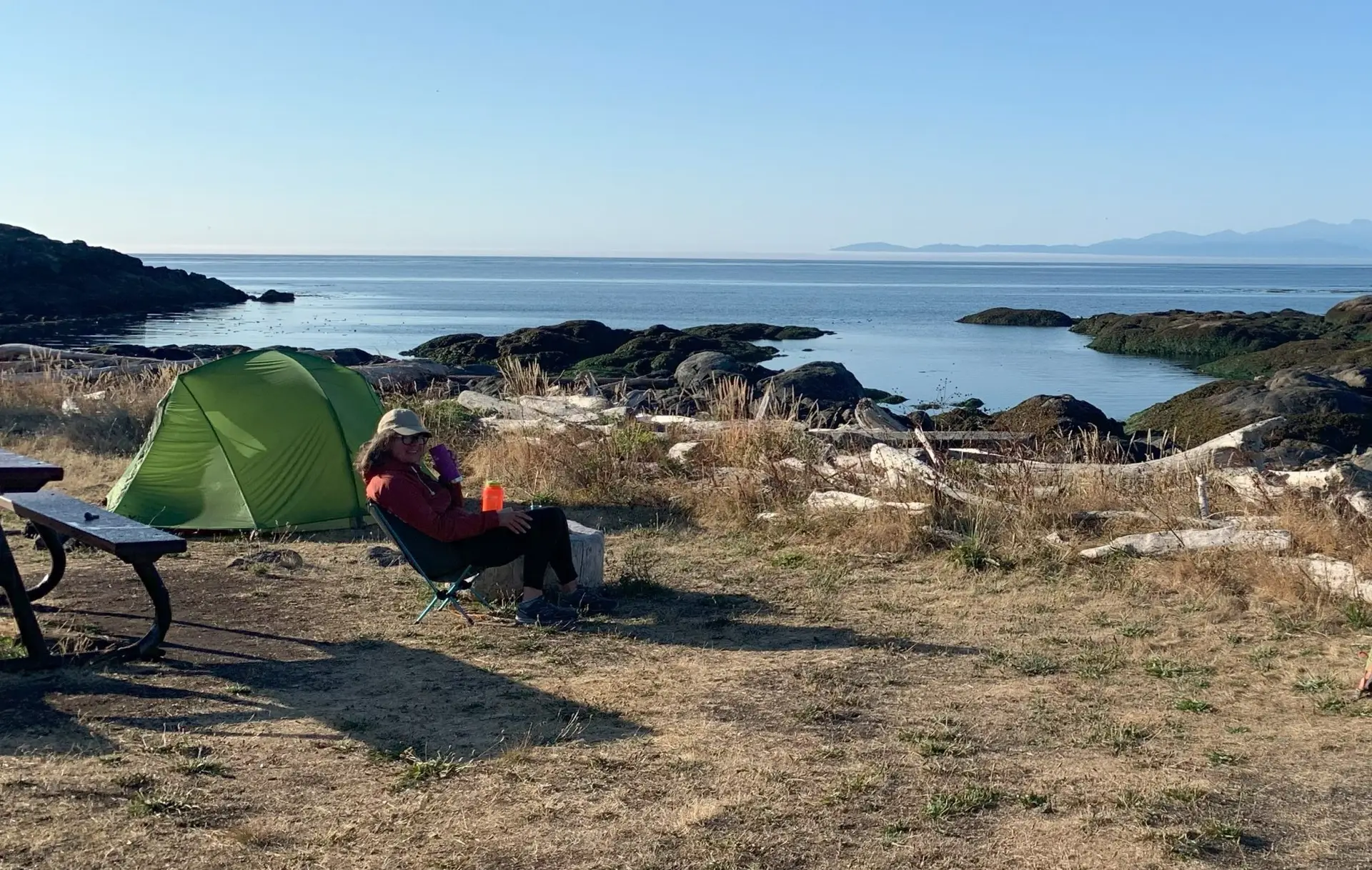
Leg 1 – South End
52.6 km from James Bay Angler Ramp to Rum Island.
After leaving the launch, you will feel very small as you pass by the cruise ship terminal and keep a watch out for seaplane traffic. It’s a pretty paddle around the coastline of Victoria with many beaches to stop and take a break.
Head across to the Discovery Islands to camp or keep paddling up the coast to D’Arcy Island. The final campsite is the Isle de Lis National Park on tiny Rum Island, the first stop for rum runners returning from the San Juan Islands during prohibition.
Leg 2 – Gulf Islands
On this 92-km stretch, the Salish Sea Marine Trail duplicates the central route of the Gulf Islands Marine Trail. The preferred route passes by Portland Island, follows the east side of Salt Spring Island then along Trincomali Channel through False Narrows to Nanaimo. There are many picturesque camp spots along the way giving you many options when planning your route.
The inside route follows the west side of Salt Spring Island through Sansum Narrows to Stuart Channel and Dodds Narrows to Nanaimo. This route passes by many small communities such as Chemainus and Ladysmith. Campsites are few along this route making for longer days on the water.
It is possible to paddle the west side of the Strait of Georgia, but it is not recommended as there are few campsites on the populated shoreline and winds in the strait are much stronger than inside the protection of the Gulf Islands.
Use the route planning tool on the member map to plot your path and download it to your GPS or print it for reference and transfer to your nautical charts.
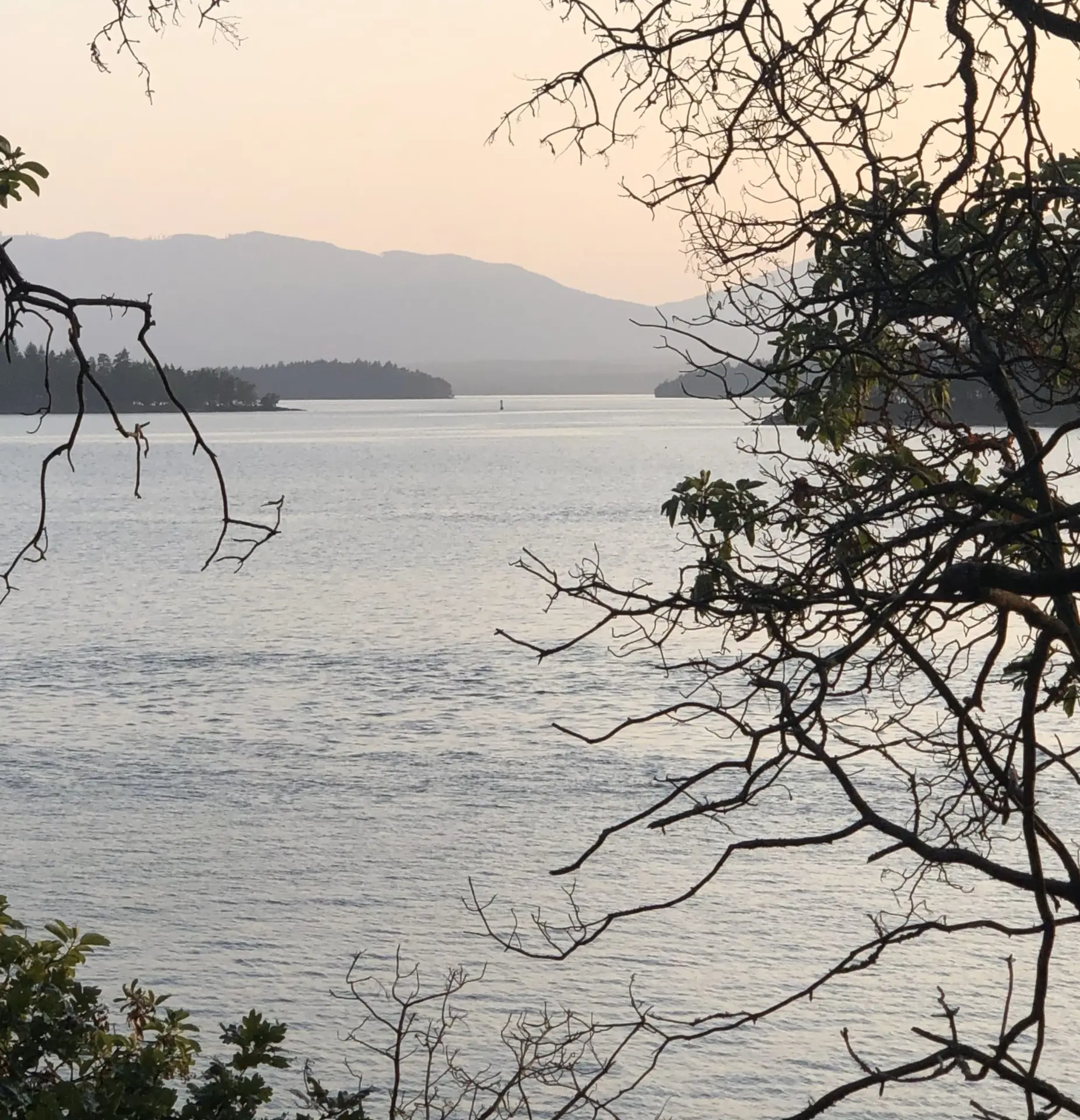
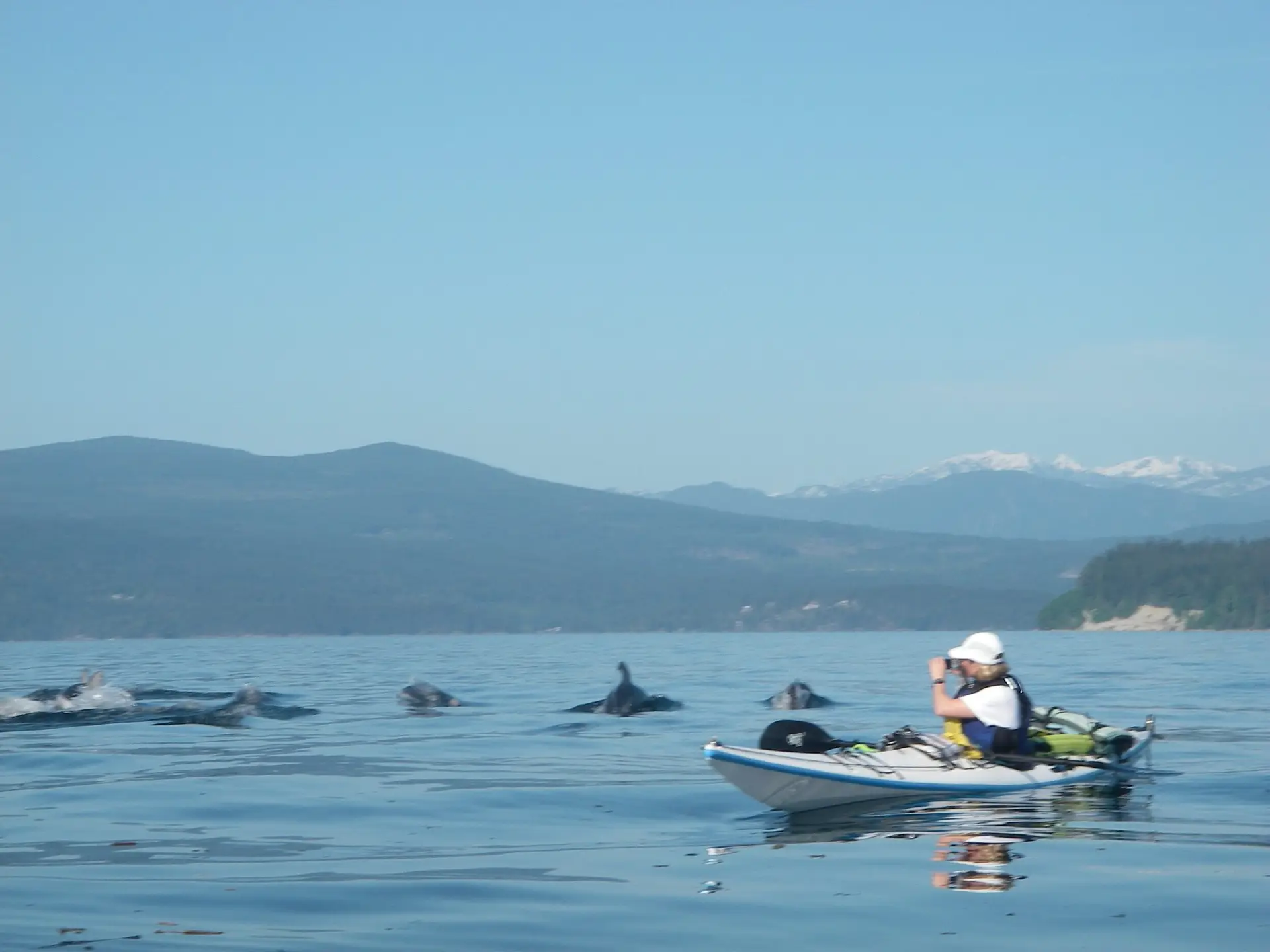
Leg 3 – The big crossings
84 km from Saysatshun (Newcastle) Island Marine Provincial Park, Nanaimo, to Friendship Park, Sechelt. Crossing the Salish Sea can be placid to downright dangerous depending on the weather.
The exposure and long distances makes it a fairly advanced route, but with attention to the forecast and timing, moderate skill levels should have no issues. There are few campsites on the shore north of Nanaimo and the Sunshine Coast making it a long paddle before you get to the 10 km open ocean crossing on either side of Texada island
Jedediah Island is the preferred campsite between crossings. The protected waters make an ideal rest stop between crossings.
Leg 4 – The Sunshine Coast
59.8 km from Friendship Park, Sechelt, to Jericho Sailing Centre, Vancouver. This leg combines some great mountain scenery and the fjordlike setting of Howe Sound, the Big City climate of Vancouver and the expansive beaches of the Lower Sunshine Coast.
It makes for a varied but imposing area to traverse, involving both a major shipping area (Burrard Inlet), an open water section along the mouth of Howe Sound and a lengthy shoreline journey along the Lower Sunshine Coast to position yourself to or from the crossing of the Strait of Georgia.
For more information on the campsites in the area visit the Sea to Sky Marine Trail page.
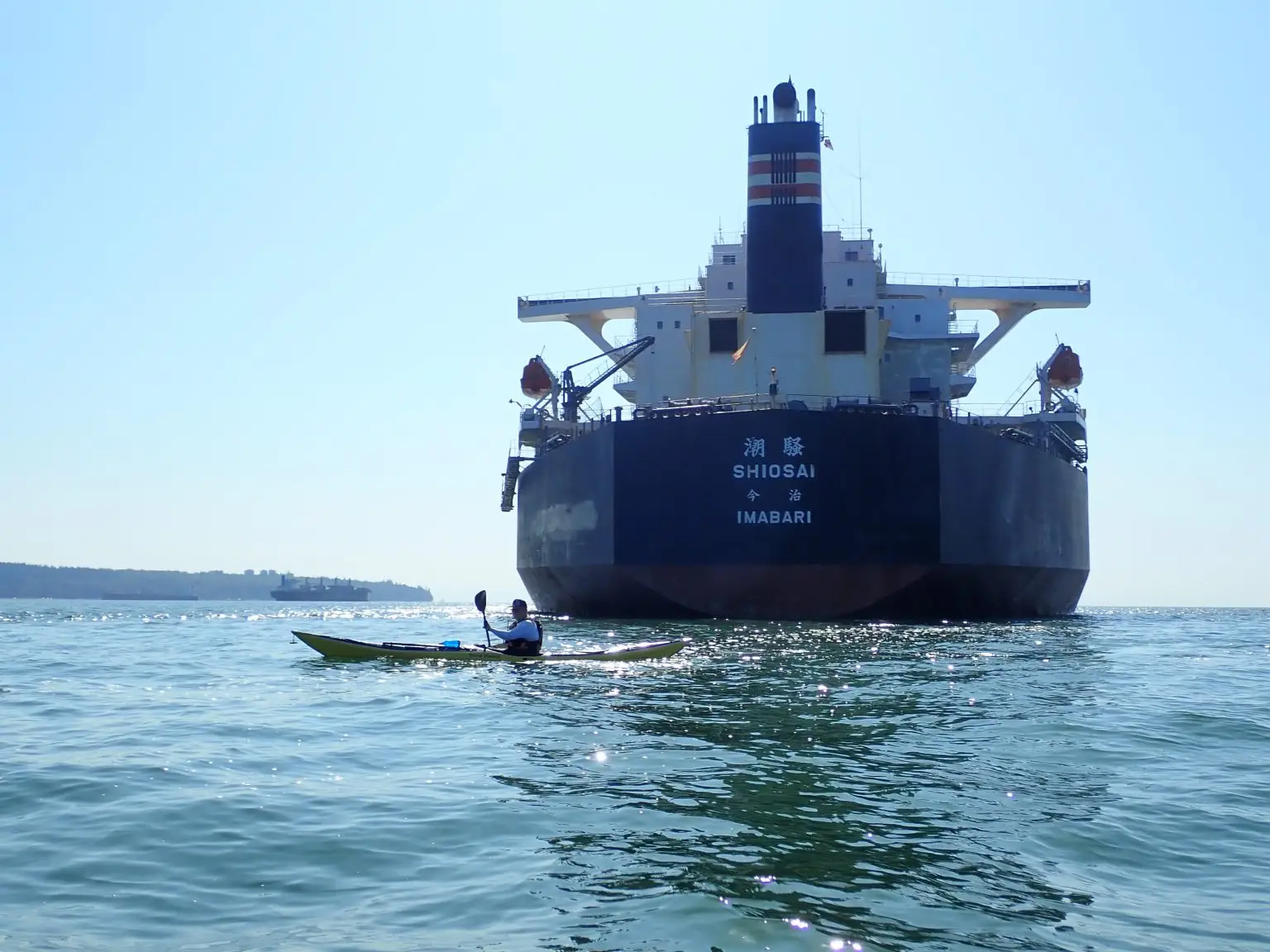
As a BCMT member you can access our trip resources page or easily find resources online at Sea Kayak Association of BC.
Hazards & Risks
The British Columbia coastline is an inherently dangerous location, and marine trail users assume the risk of navigating the BC coast. The BC Marine Trails Network has pinpointed some key locations where risks are increased due to pre-existing known conditions or possibility of risk. However, marine trail users are cautioned that risk can occur at any time at any location, and proper equipment, clothing, rescue gear, preparation and training are recommended to ensure optimal safety. Recurring safety considerations include:
Currents and rips: Conditions will be lessened if not eliminated at slack times, so check the Tides and Currents Tables to find the safest time to cross or transit difficult locations.
Ferry lane crossings: Several busy ferry corridors must be crossed over the course of the Gulf Islands, Salish Sea, or Sea to Sky Marine Trails. Risk can be minimized by monitoring the appropriate Canadian Coast Guard Vessel Traffic Services broadcast channels and by calling in on that same channel to alert traffic to your presence. We strongly recommend calling in for groups crossing ferry lanes or in questionable conditions such as chop, darkness or fog that could make paddlecraft difficult to see.
Shipping lanes: Be sure to know where shipping lanes are located on your charts and monitor Canadian Coast Guard Vessel Traffic Services broadcast channels to track shipping movement.
